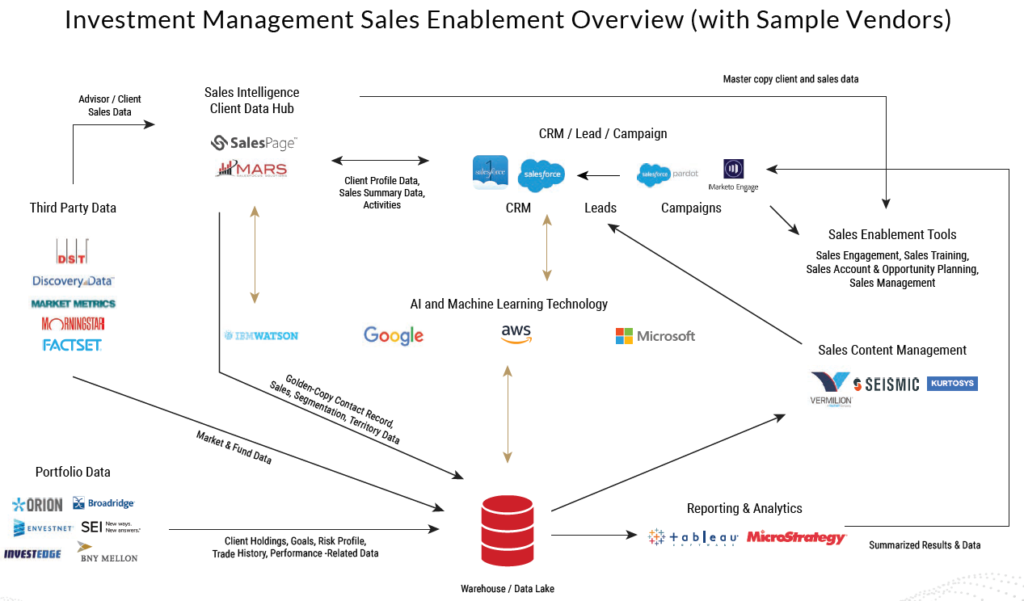Forrester Research defines sales enablement as “A strategic, ongoing process that equips all client-facing employees with the ability to consistently and systematically have a valuable conversation with the right set of customer stakeholders at each stage of the customer’s problem-solving life cycle to optimize the return of investment of the selling system.”
Sales enablement is a strategic approach to align sales, marketing, and operations around the common goal of equipping salespeople with the right resources, tools, and processes to sell effectively and support clients. It’s important to note that sales enablement is not just content or technology; it’s a strategy to maximize sellers’ ability to communicate value and differentiate in a clear, consistent, and compelling way.
Sales enablement technology can help companies reinforce and drive processes around their sales enablement strategies. It is built to help companies open communication lines between the people creating customer-facing assets (i.e., marketing) and those charged to leverage these resources in deals (i.e., sales).
Over the past few years, sales enablement has gone mainstream and is set to become part of the C-suite in the future. More recently, COVID-19 changed the sales landscape and has amplified the importance of sales enablement. With the right strategies and tools, firms can replace face-to-face interaction without forgoing the personal touch.

To learn more about the role of sales enablement in investment management and the success criteria for an effective sales enablement program, download our newest guide.
